Planning a trip to this fantastic volcanic island but still unsure when to leave? We’ve got you covered! In this guide you’ll find everything you need to know about Lanzarote holiday weather, from average temperatures to winds and rain breakdown.
Tabla de Contenidos
The Climate of Lanzarote: A Brief Overview
Imagine a place where the weatherman’s got the easiest job because the forecast is almost always sunny thanks to its mild, subtropical climate. The secret? A strategic location that ticket all the boxes.
Our beautiful volcanic island sits pretty, basking in the Atlantic Ocean, off the coast of Africa, enjoying a climate that’s like eternal spring. It doesn’t get too hot, thanks to the refreshing trade winds, and it certainly doesn’t get too cold, courtesy of its geographical position. This perfect middle ground means you can visit Lanzarote at any time of the year and still hit the holiday jackpot.
Whether you’re planning a winter escape to dodge the chill back home or a summer getaway to make the most of the outdoors, Lanzarote is ready to welcome you with open arms and sunny days, no matter when you decide to drop by.
Seasonal Lanzarote Holiday Weather Guide
Lanzarote’s weather is a constant invitation to enjoy the outdoors, no matter when you visit. Each season offers its own flavor of fun and adventure, making it easy to plan your perfect holiday at any time of the year. So, let’s dive into what it brings to the table and how you can make the most of the island’s welcoming climate.
Spring, the Island Awakens
Spring in Lanzarote is the season of rebirth, with temperatures teasing between a comfortable 20°C (68°F) and 25°C (77°F). The sea starts warming up, inviting you for a dip, while the sun generously extends its hours, giving you more playtime. It’s the perfect backdrop for a stroll through the vineyards in La Geria, where the volcanic soil nurtures the grapes that turn into the island’s unique wines. Or, you could also awaken your inner explorer in Timanfaya National Park‘s moonscapes without a drop of sweat. And let’s not forget the local festivals and Carnivals—where the island’s culture bursts into color and life, inviting you to dance along.
Summer, the Sun Takes the Stage
When summer hits, temperatures nudge between 25°C (77°F) and 35°C (95°F). The sun reigns supreme, but remember, it’s a friendly monarch here, thanks to those trade winds. Early mornings or late afternoons are your best bets for outdoor adventures, leaving the midday sun to the siesta enthusiasts. Hit the beaches for some sunbathing or dive into water sports, you’ll find it so refreshing. And as the evening cools, the island’s cultural heartbeat intensifies, with events and festivities that spill into the night.
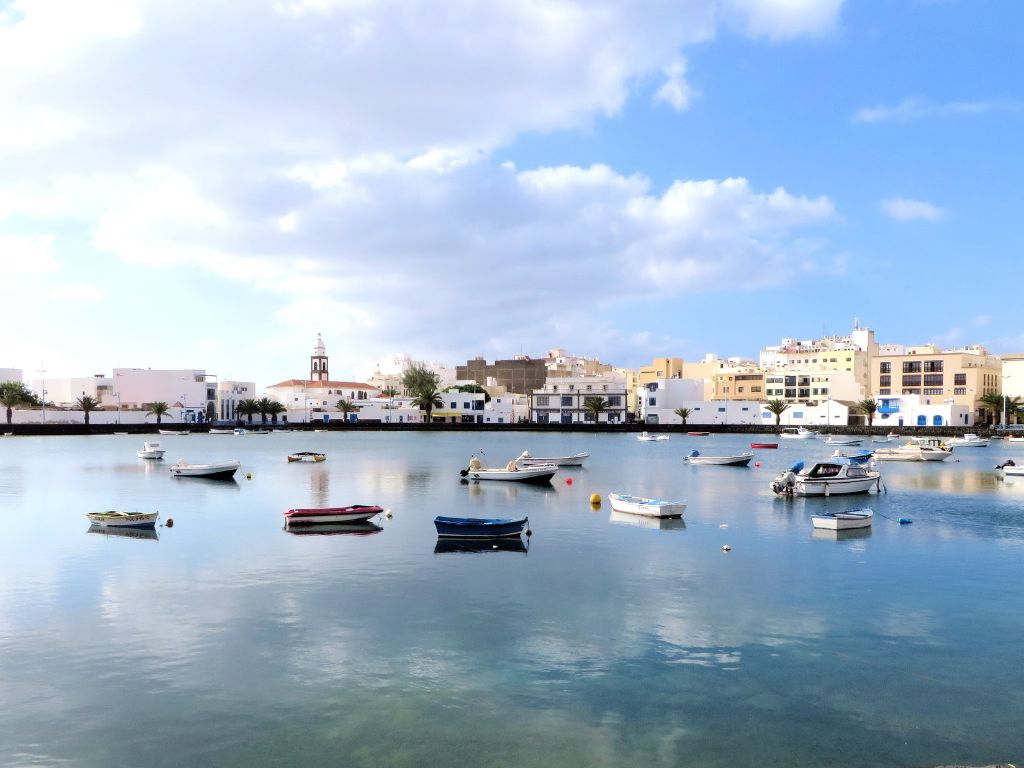
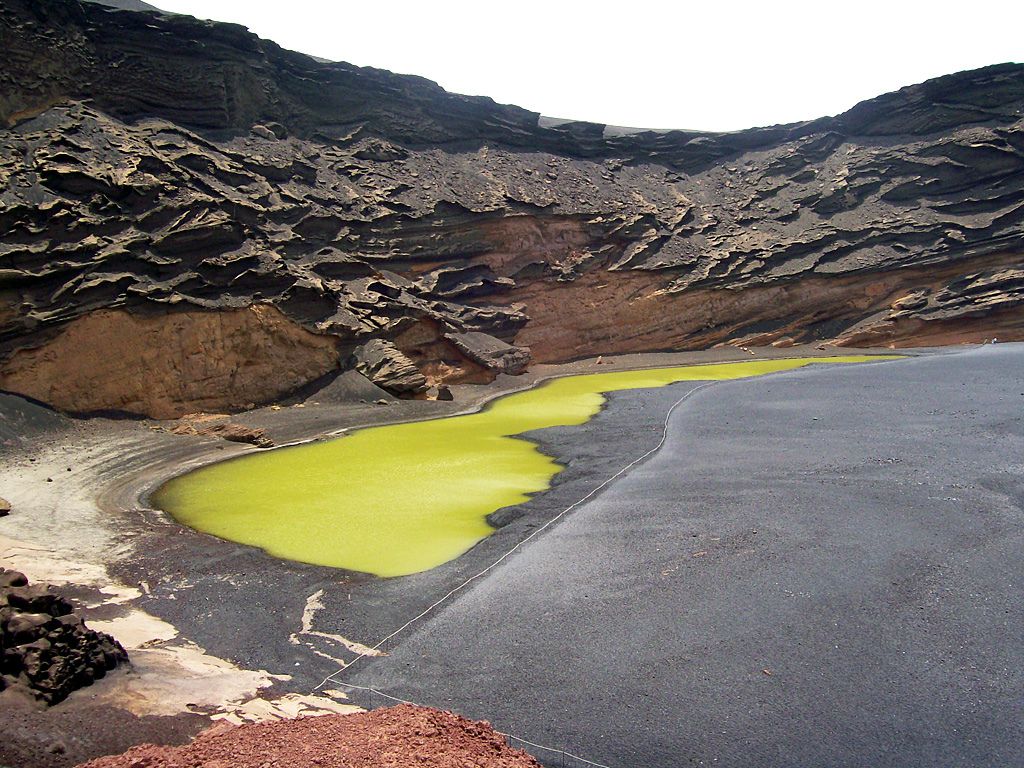
Autumn, the Island's Best-Kept Secret
Autumn whispers a little secret: it’s one of the best times to visit Lanzarote. With temperatures still mild, ranging from 22°C (72°F) to 28°C (82°F), and the summer crowds gone, the island feels like it’s all yours. The land breathes out in relief, with the occasional rain shower refreshing the air. Now’s the time to lace up your hiking boots or hop on a bike to explore Lanzarote’s natural wonders at your own pace, with the roads and trails open and inviting.
Winter, A Warm Embrace
Winter in Lanzarote is a gentle nudge rather than a harsh bite, with temperatures cozily set between 17°C (63°F) and 24°C (75°F). While the rest of Europe shivers, Lanzarote basks in a mild winter sun, occasionally showered by rain but mostly smiling with clear skies. The Christmas spirit is tangible, with lights and festivities warming the hearts of locals and visitors alike. It’s also the season for nature’s spectacular show: whale and dolphin watching. And for the thrill-seekers, the winds pick up just enough to make windsurfing an exhilarating winter sport.
A Peek At Lanzarote Monthly Weather Holiday
This detailed breakdown should help you decide when to visit Lanzarote based on your weather preferences, whether you’re looking for the warm embrace of the summer sun or the gentle cool of a subtropical winter.
January to March (Winter to Early Spring)
- Temperature: Gradually warming from average highs of 20°C (68°F) in January and February to 22°C (72°F) in March. Nighttime lows move from 14°C (57°F) up to 15°C (59°F).
- Winds: Northern trade winds are more pronounced in January and February, bringing cooler air, but start to lessen in March, making way for slightly warmer days.
- Rainfall: This quarter sees the most rainfall of the year, though it’s still quite light, decreasing from an average of 25mm in January to around 15mm in March.
April to June (Late Spring to Early Summer)
- Temperature: A noticeable warming trend, with highs moving from 23°C (73°F) in April to 26°C (79°F) by June. Lows increase from 16°C (61°F) to 19°C (66°F).
- Winds: Winds are mild to moderate, ideal for water sports. By June, the warmer trade winds start, helping to keep the climate comfortable despite rising temperatures.
- Rainfall: Rainfall is minimal across these months, dropping to almost non-existent levels by June, marking the dry season’s start.
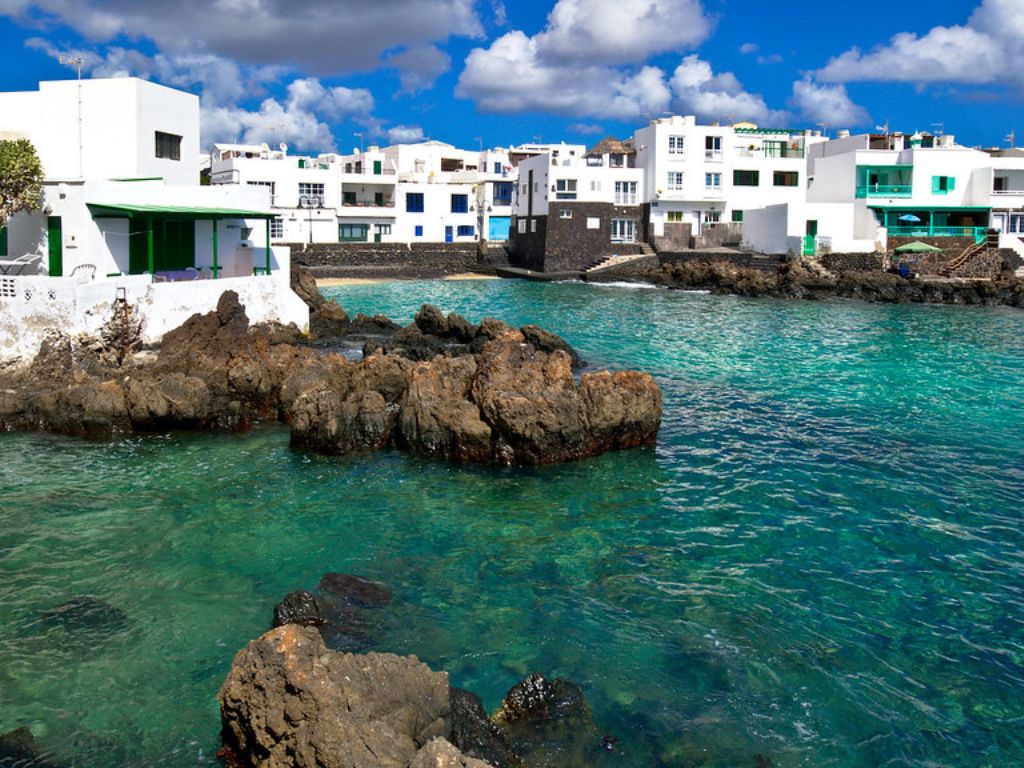
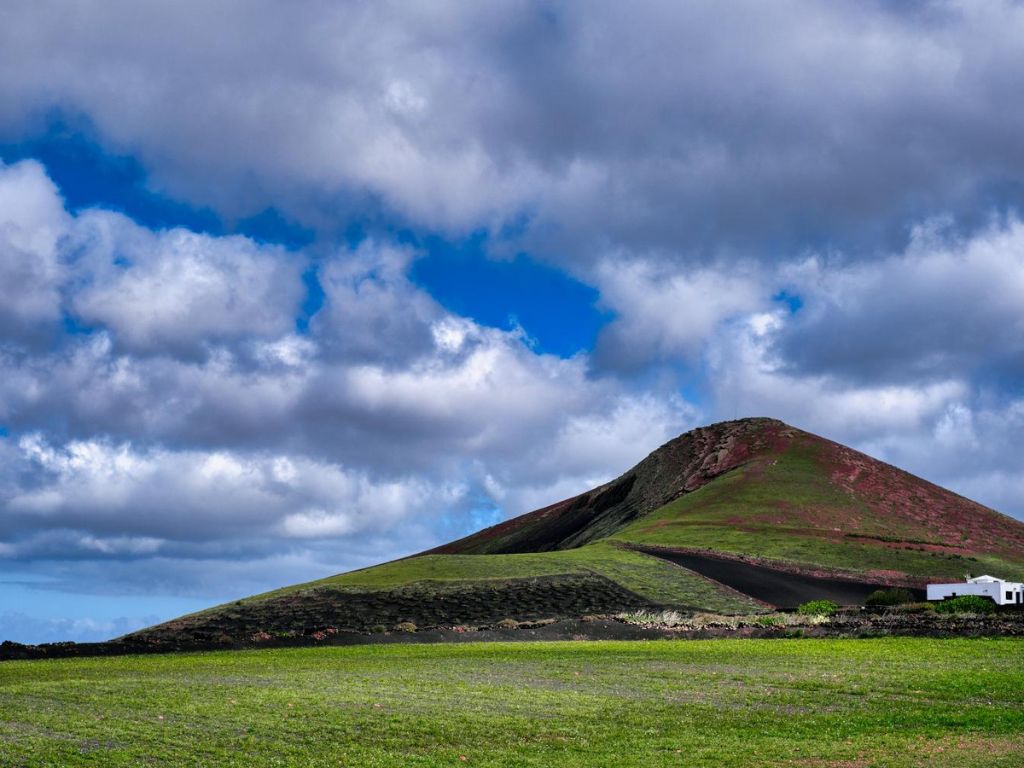
July to September (Peak Summer)
- Temperature: The hottest quarter, with July and August seeing highs potentially reaching 30°C (86°F) and lows not dropping much below 21°C (70°F). September sees a slight decline to highs of 29°C (84°F).
- Winds: July and August experience the strongest trade winds, which help to temper the heat. By September, the winds begin to lessen, leading to warmer evenings.
- Rainfall: Rain is a rare guest during these months, with the island enjoying long, dry, and sunny days.
October to December (Autumn to Early Winter )
- Temperature: Cooling trend begins, with October highs around 27°C (81°F) cooling to 22°C (72°F) by December. Nighttime lows decrease from 20°C (68°F) in October to 16°C (61°F) in December.
- Winds: Lighter winds overall, leading to more stable and warmer weather patterns in the early part of the quarter, with a gradual shift to cooler breezes by December.
- Rainfall: Rainfall picks up slightly in October and continues to increase through December, marking a return to the wetter season, though still relatively light by most standards.
So, Is There A Rainy Season In Lanzarote ?
In Lanzarote, the concept of a «rainy season» is a bit of a stretch compared to what you might expect in more tropical destinations. The island, with its subtropical climate, enjoys over 300 days of sunshine a year, making it a sun-seeker’s paradise. However, if you’re looking for what could be termed the «rainiest» period, it would fall roughly between late October and February.
During these months, the island experiences a slight uptick in rainfall compared to the rest of the year, but even then, we’re talking about a relatively low amount of rain. The showers are often short-lived and can provide a refreshing break from the constant sunshine. This mild and sporadic rainfall contributes to the island’s winter greenery, making it a beautiful time for nature walks and exploring the more lush aspects of Lanzarote’s landscapes.
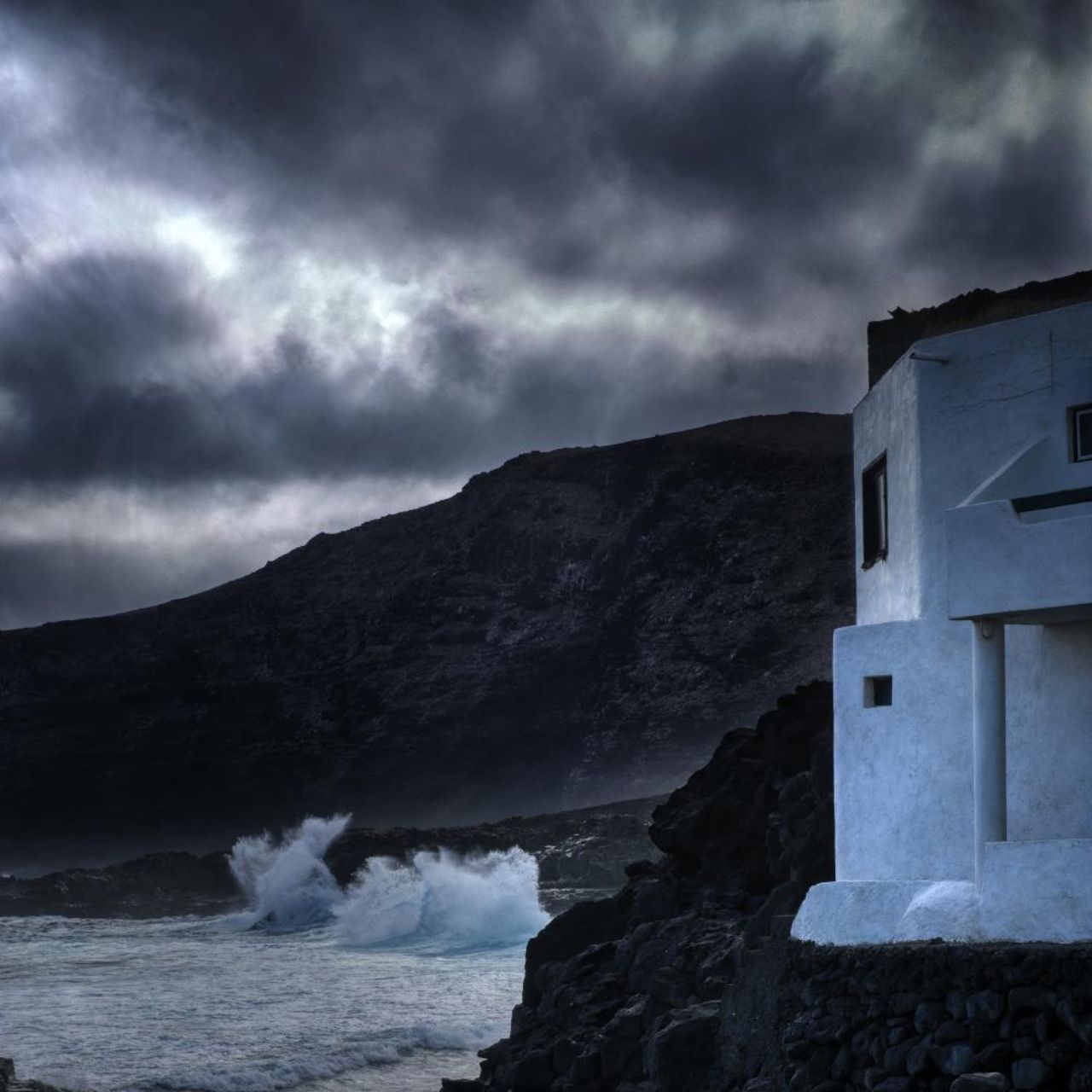
What Is Lanzarote Calima?
The calima is a unique weather phenomenon that can sweep across Lanzarote and the other Canary Islands, bringing with it a distinct haze that transforms the island’s usually clear and sunny skies. This event occurs when hot, dry, and dusty air travels from the Sahara Desert over the Atlantic Ocean and into the Canaries. The result? A surreal, almost otherworldly atmosphere that blankets the landscape, reducing visibility and sometimes even casting a sepia-like tint over everything in sight.
Origins, Frequency and Effects
It is most common in the winter and early spring, although it can occur at any time of the year and it’s driven by easterly winds from the Sahara Desert, meaning it can arrive quite suddenly and last for a few days to a week.
But what are its effects? Firstly, the dense dust can significantly reduce visibility, affecting everything from driving conditions to the clarity of the beautiful Lanzarote vistas. Secondly, the fine Saharan dust particles can lead to a drop in air quality, making it a bit uncomfortable for individuals with respiratory issues or allergies.
The calima often brings a rise in temperature, making it feel warmer than the usual mild Canary climate. But despite its challenges, it can also create stunning sunrises and sunsets, with the particles scattering the light and producing vibrant hues across the sky.
So, how to cope with the calima? It’s essential to drink plenty of water, because the dry air can dehydrate you more quickly. Also, those with respiratory concerns should consider staying indoors as much as possible during severe episodes.
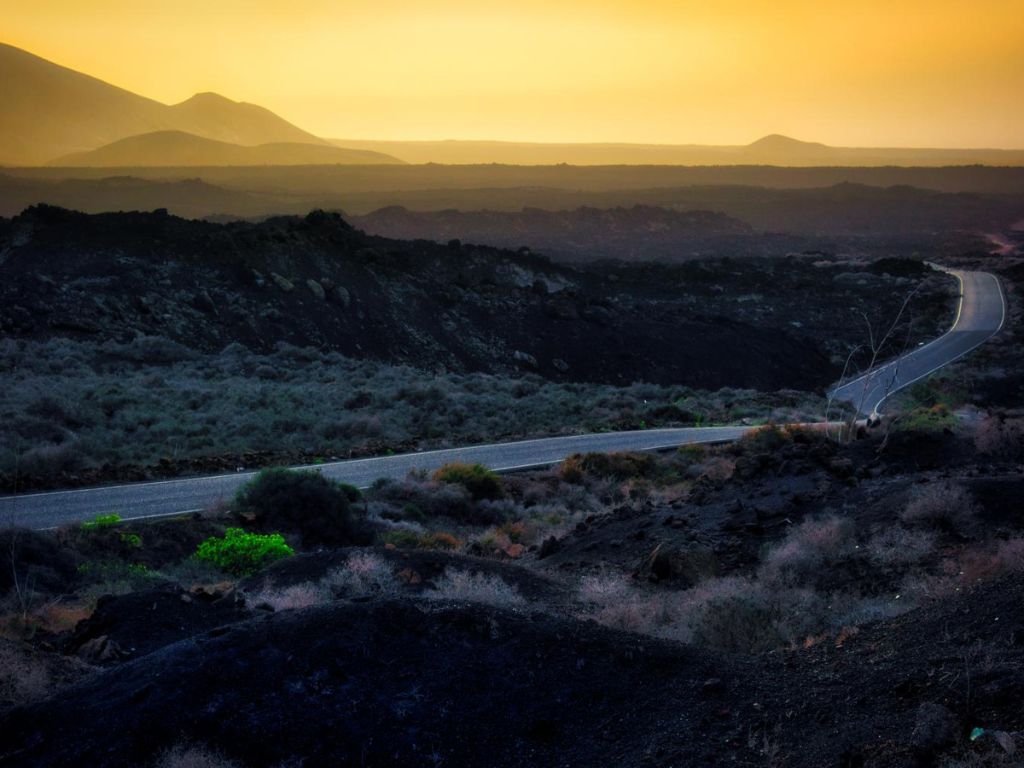
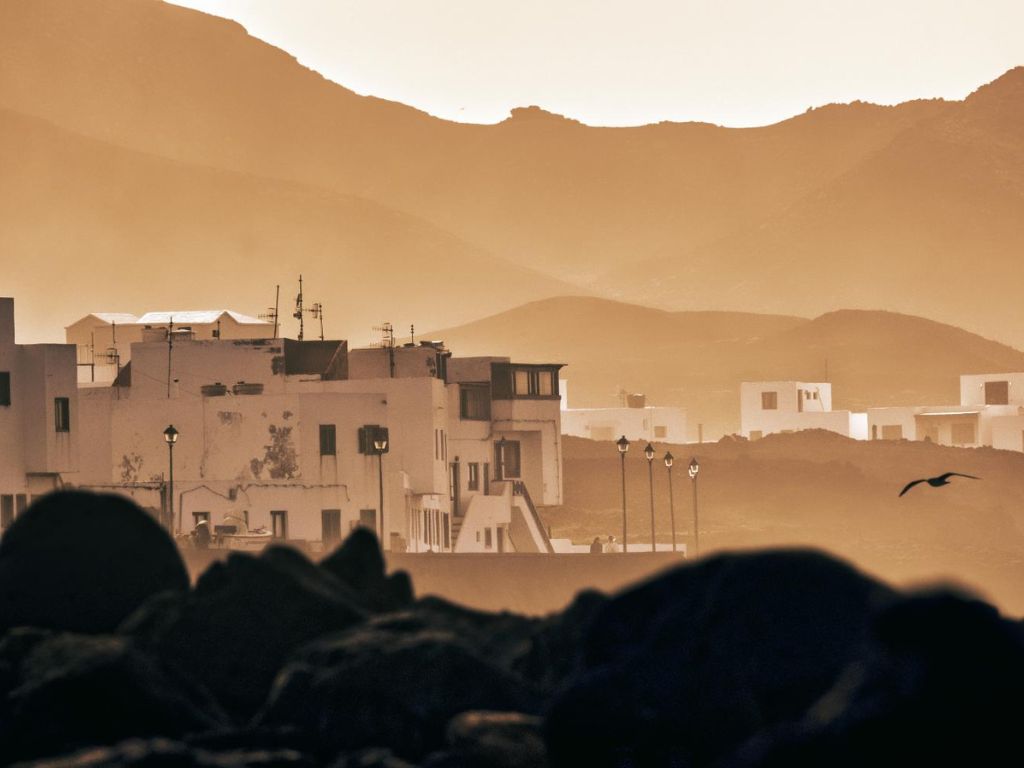
What to Pack for Lanzarote
With regards to spring and summer, your suitcase should be as ready for adventure as you are. Think lightweight clothing that lets your skin breathe and move freely—linen shirts, breezy dresses, and loose-fitting tees are your best friends. The sun here is no joke, so arm yourself with sun protection: a high SPF sunscreen, a stylish hat, and sunglasses that scream “vacation mode.” And because exploring is the name of the game, comfortable walking shoes are a must.
When it comes to autumn and winter, this is the time to master the art of layering. Start with breathable base layers that wick away moisture, add a cozy middle layer (think soft fleeces or stylish knits), and top it off with a lightweight, waterproof and windproof jacket that shields you from the occasional drizzle. The evenings can get cool, especially by the sea, so a warm scarf and a beanie might just become your unexpected holiday heroes. And let’s not forget those who are drawn to the island’s waters year-round; thermal wear for water sports ensures the ocean remains your playground, even when the mercury dips.
No matter when you decide to come to Lanzarote, there are a few extras you shouldn’t overlook:
- A reusable water bottle keeps you hydrated under the sun or after a long hike.
- A sturdy backpack will carry your essentials as you explore.
- A good camera or smartphone to capture the moments that words can’t describe.
Conclusion
And there you have it, the grand tour of Lanzarote’s climate. The island is ready to wrap you in an experience so unique, so memorable, that you’ll leave with a bit of its sunshine in your heart.
So, why wait? It’s time to turn those daydreams into reality. Lanzarote Vacation Homes is ready to tailor your holiday experience to ensure you make the most of every moment.
Let us show you the island through our eyes, where every weather forecast is just another reason to explore, relax, and fall in love with Lanzarote all over again. Book your next escape with us now!



